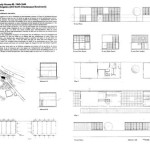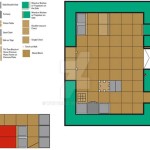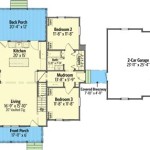Hurricane-Proof House Plans: Building Resilience in the Face of Nature's Fury
In regions prone to hurricanes, building a home that can withstand the wrath of nature is paramount. Hurricane-proof house plans go beyond aesthetics and functionality; they prioritize structural integrity and safety, incorporating features that minimize damage and ensure the well-being of occupants during a storm. These plans are meticulously designed to withstand high winds, heavy rains, and potential flooding, offering a sense of peace of mind in the face of hurricanes.
Key Features of Hurricane-Proof House Plans
Hurricane-proof house plans incorporate several key features that contribute to their resilience. These features work in synergy to create a structure that can withstand the immense forces unleashed by hurricanes.
1. Reinforced Concrete and Steel Framing
The foundation of a hurricane-proof home is built upon a robust framework. Reinforced concrete and steel framing are favored materials due to their exceptional strength and ability to withstand the intense forces of high winds and heavy rains. These materials can handle significant lateral loads, ensuring the stability of the house during a storm.
Concrete's monolithic nature creates a rigid structure that can absorb and distribute pressure, reducing the risk of collapse or severe damage. Steel framing, known for its high tensile strength, further reinforces the structure, providing additional resistance to bending and shearing forces. The combination of these materials offers a robust foundation for a hurricane-resistant home.
2. Impact-Resistant Windows and Doors
Windows and doors are often the weakest points of a house, posing a significant vulnerability during hurricanes. Impact-resistant windows and doors are crucial elements of hurricane-proof house plans. These specialized units are designed and engineered to withstand the impact of flying debris and wind pressure.
Impact-resistant windows typically feature laminated glass, which consists of multiple layers of glass bonded together with a strong interlayer. This multi-layered construction makes the glass more difficult to break and less likely to shatter into dangerous projectiles. Impact-resistant doors are constructed with reinforced frames and impact-resistant core materials like solid wood or fiberglass.
3. Elevated Construction and Flood Protection
Living in a hurricane-prone area often means being at risk of flooding. Hurricane-proof house plans incorporate strategies to mitigate flood risk. Elevated construction is a common approach, raising the house above the base flood elevation. This elevation ensures that the habitable space is not submerged during storm surges or rising water levels.
Beyond elevation, flood protection measures can include waterproof materials, storm drains, and water-resistant finishes. These features prevent water from penetrating the house, minimizing the risk of water damage and mold formation.
4. Roof Design and Anchoring
The roof is a critical component of a hurricane-proof home, as it needs to withstand strong winds and heavy rains. Hurricane-proof house plans prioritize roof design and anchoring to ensure its integrity. Roofs are often designed with a steeper pitch, allowing water to drain more effectively and reducing the risk of water pooling. They often feature robust materials like metal roofing, which offers excellent wind resistance and durability.
Proper roof anchoring is essential to prevent the entire roof from being lifted or blown off during a hurricane. Hurricane-proof house plans include securely anchoring the roof to the walls using hurricane clips or straps, further strengthening the bond between the roof and the house.
Beyond these key features, several other considerations contribute to the resilience of hurricane-proof house plans. These include:
- Proper ventilation: Adequate ventilation helps prevent moisture buildup, reducing the risk of mold and mildew growth.
- Landscaping: Strategic planting of trees and shrubs can help break wind gusts and mitigate erosion caused by heavy rains.
- Emergency power: A backup generator can provide essential power in the event of a power outage.
- Safe rooms: A designated safe room within the house, reinforced with concrete or steel, provides a refuge during the most intense parts of a hurricane.

Hurricane Proof Homes Stilt Houses Piling Topsider

Hurricane Proof Homes Stilt Houses Piling Topsider
Deltec S Hurricane Proof Homes Weather The Storm Architect

Hurricane Resistant Design

Hurricane Proof Homes Stilt Houses Piling Topsider

Affordable Hurricane Resistant Eco Houses Katana House Build Fast Proof Modern Architecture

Hurricane Proof House Plans Goodbye Bunker O Gorgeous

Pin On Beach House

Hurricane Proof Homes Stilt Houses Piling Topsider

Hurricane Proof Homes Stilt Houses Piling Topsider
Related Posts








